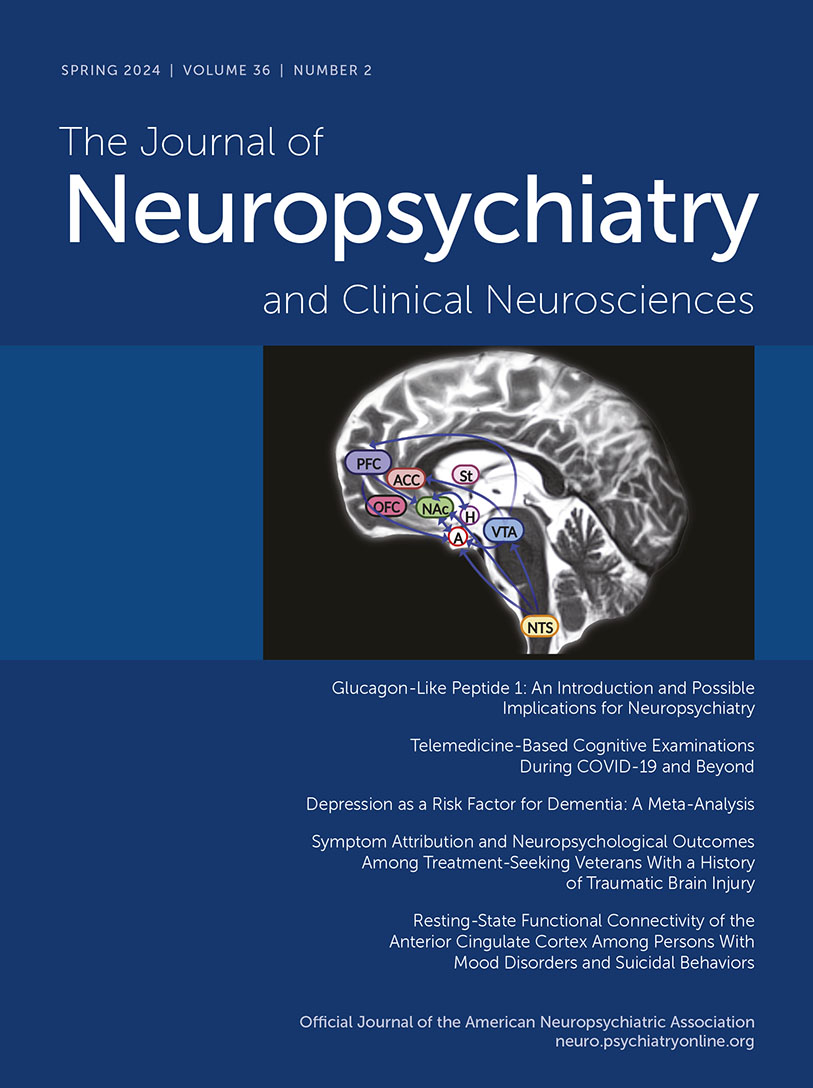Resting-State Functional Connectivity of the Anterior Cingulate Cortex Among Persons With Mood Disorders and Suicidal Behaviors
Abstract
Objective:
To assess whether anterior cingulate cortex (ACC) abnormalities contribute to suicide risk in major depressive disorder and bipolar disorder, the investigators compared resting-state functional connectivity (rsFC) of ACC subdivisions between individuals with major depressive or bipolar disorder with and without a lifetime history of suicidal behavior.
Methods:
Forty-two inpatients with and 26 inpatients without a history of suicidal behavior (SB+ and SB−, respectively) associated with major depressive or bipolar disorder and 40 healthy control (HC) participants underwent rsFC neuroimaging. RsFC of the subgenual, perigenual, rostral, dorsal, and caudal subdivisions of the ACC was calculated. Possible confounders, such as psychosis and severity of depression, were controlled for, seed-to-voxel and post hoc region of interest (ROI)-to-ROI analyses were performed, and the accuracy of rsFC in classifying suicidal behavior was studied.
Results:
Compared with individuals in the SB− and HC groups, patients in the SB+ group had higher rsFC between the left rostral and right dorsal ACC seeds and visual cortex clusters. Conversely, rsFC between the left rostral and right dorsal ACC seeds and cingulate and frontal clusters was lower in the SB+ group than in the HC group. Left rostral ACC to left Brodmann’s area 18 connectivity showed up to 75% discriminative accuracy in distinguishing SB+ from SB− patients.
Conclusions:
A history of suicidal behavior among individuals with major depressive disorder or bipolar disorder was associated with altered rsFC of the rostral and caudal ACC, regions involved in conflict detection and error monitoring. Replication of these findings is needed to further explore the involvement of the ACC in the neurobiology of suicidal behavior and suicidal ideation.
Access content
To read the fulltext, please use one of the options below to sign in or purchase access.- Personal login
- Institutional Login
- Sign in via OpenAthens
- Register for access
-
Please login/register if you wish to pair your device and check access availability.
Not a subscriber?
PsychiatryOnline subscription options offer access to the DSM-5 library, books, journals, CME, and patient resources. This all-in-one virtual library provides psychiatrists and mental health professionals with key resources for diagnosis, treatment, research, and professional development.
Need more help? PsychiatryOnline Customer Service may be reached by emailing [email protected] or by calling 800-368-5777 (in the U.S.) or 703-907-7322 (outside the U.S.).



